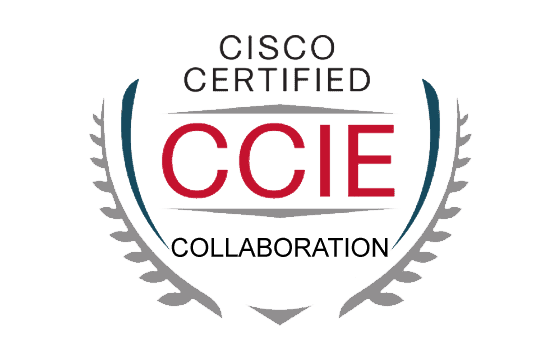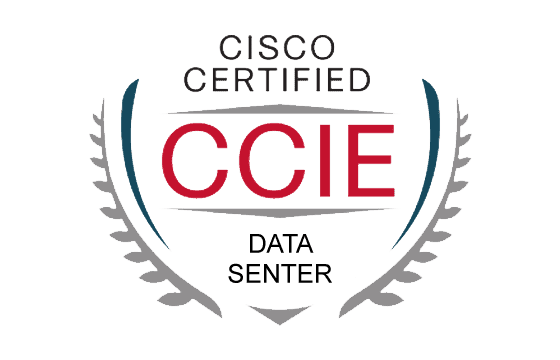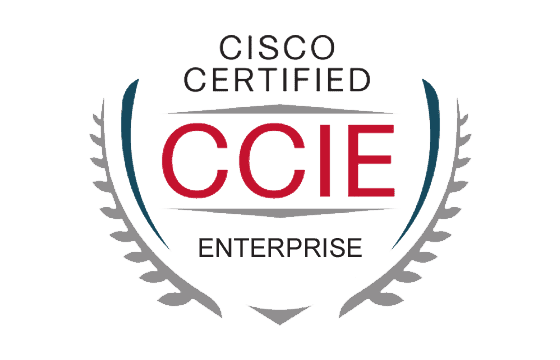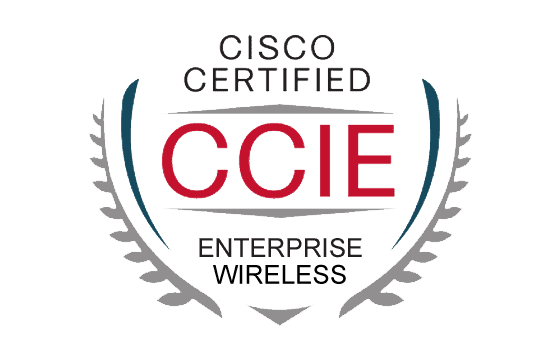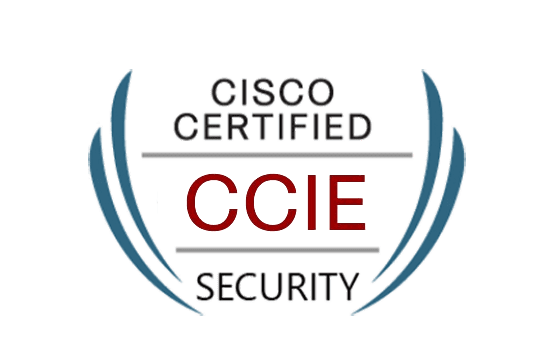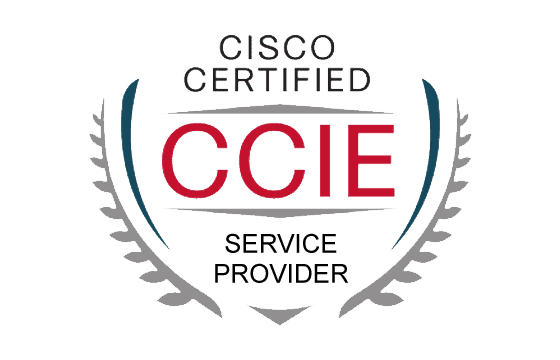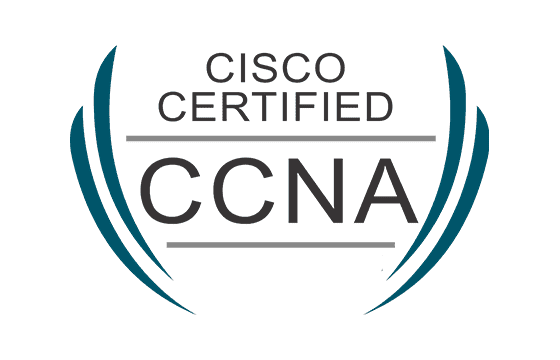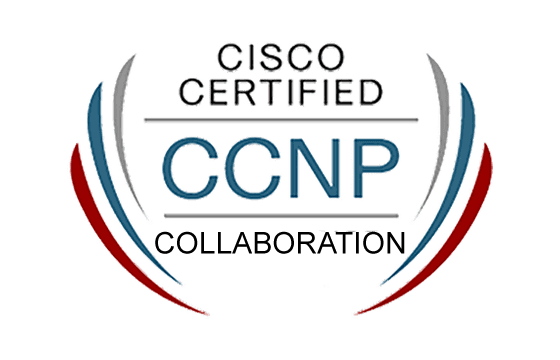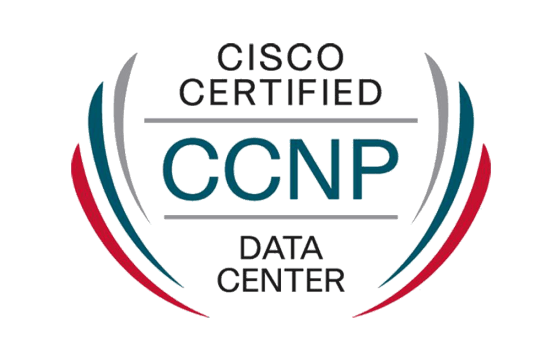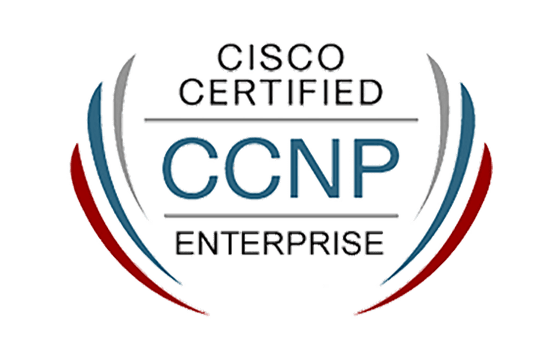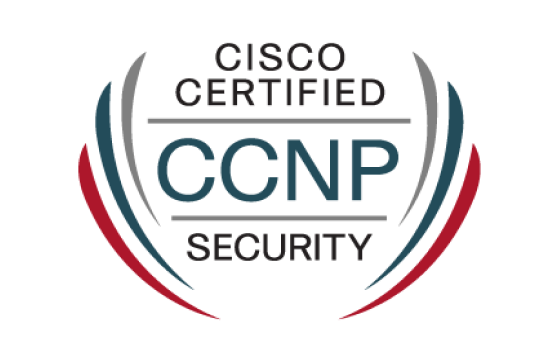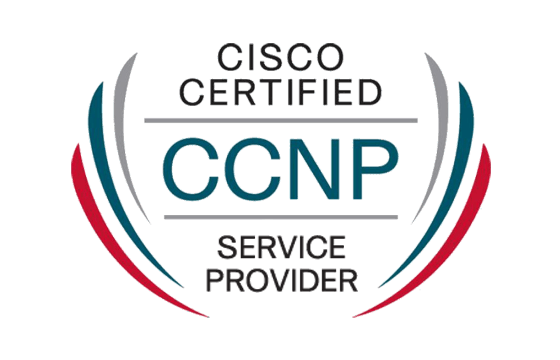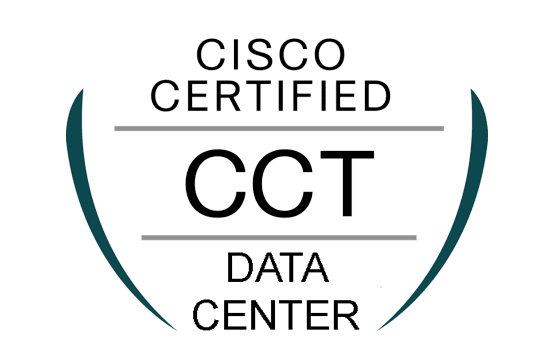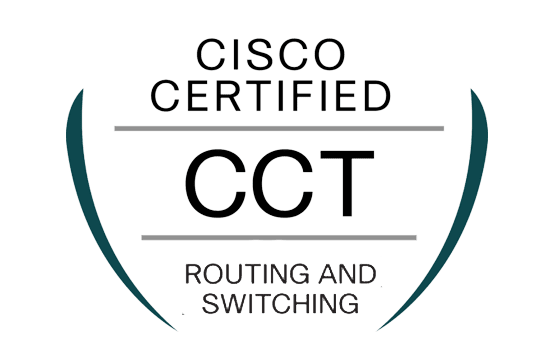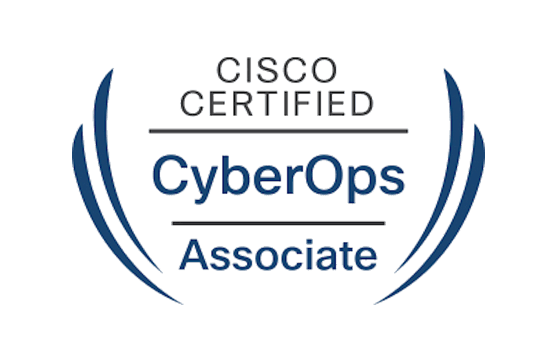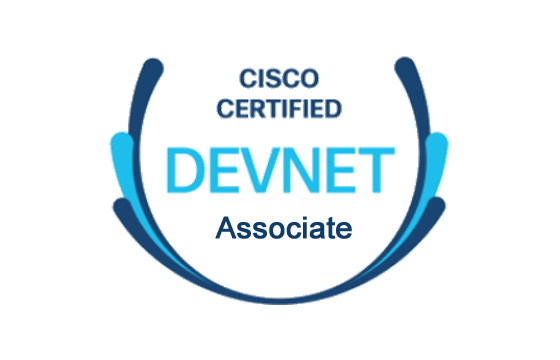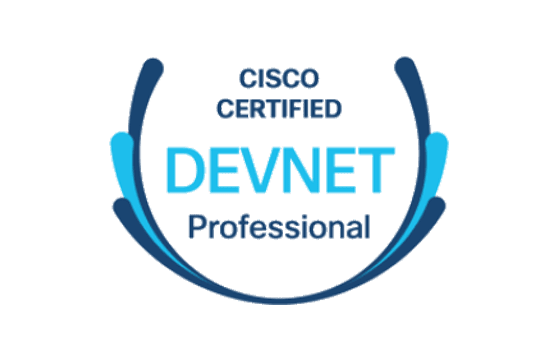Pass Your Cisco CCNP Enterprise Certification Easy!
Cisco CCNP Enterprise Certification Exams Questions & Answers, Accurate & Verified By IT Experts
Instant Download, Free Fast Updates, 99.6% Pass Rate.

Implementing Cisco Enterprise Network Core Technologies (ENCOR)
Includes 728 Questions & Answers
$69.99
Download Free CCNP Enterprise Practice Test Questions VCE Files
| Exam | Title | Files |
|---|---|---|
Exam 300-410 |
Title Implementing Cisco Enterprise Advanced Routing and Services (ENARSI) |
Files 2 |
Exam 300-415 |
Title Implementing Cisco SD-WAN Solutions (ENSDWI) |
Files 1 |
Exam 300-420 |
Title Designing Cisco Enterprise Networks (ENSLD) |
Files 2 |
Exam 300-425 |
Title Designing Cisco Enterprise Wireless Networks (300-425 ENWLSD) |
Files 1 |
Exam 300-430 |
Title Implementing Cisco Enterprise Wireless Networks (300-430 ENWLSI) |
Files 1 |
Exam 300-435 |
Title Automating Cisco Enterprise Solutions (ENAUTO) |
Files 1 |
Exam 350-401 |
Title Implementing Cisco Enterprise Network Core Technologies (ENCOR) |
Files 2 |
Cisco CCNP Enterprise Certification Exam Dumps & Practice Test Questions
Prepare with top-notch Cisco CCNP Enterprise certification practice test questions and answers, vce exam dumps, study guide, video training course from ExamCollection. All Cisco CCNP Enterprise certification exam dumps & practice test questions and answers are uploaded by users who have passed the exam themselves and formatted them into vce file format.
Understanding Cisco CCNP Enterprise Certification
The Cisco Certified Network Professional (CCNP) Enterprise certification is recognized worldwide as a significant milestone for networking professionals. Unlike entry-level certifications, it reflects advanced knowledge and practical expertise in managing enterprise-level networks. Professionals who achieve this certification demonstrate their ability to design, implement, and troubleshoot complex networks in real-world environments.
CCNP Enterprise is designed for individuals who already have foundational networking knowledge and want to advance their careers. The certification emphasizes not only theoretical understanding but also hands-on experience, ensuring that professionals can solve practical network challenges. It covers multiple domains, including routing, switching, wireless networking, network security, and automation, making it comprehensive and industry-relevant.
Career Opportunities and Professional Growth
One of the key advantages of earning a CCNP Enterprise certification is the significant boost it provides to career opportunities. IT organizations increasingly seek professionals with advanced skills capable of managing large-scale enterprise networks. Individuals with CCNP Enterprise certification often qualify for positions such as network engineer, senior network administrator, IT consultant, and systems integrator.
Employers value the certification because it demonstrates a candidate’s ability to handle complex network environments and critical infrastructure. This makes certified professionals more competitive in the job market, increasing their chances of securing challenging roles with greater responsibilities. The certification also acts as a differentiator during promotions and performance evaluations, often leading to career advancement.
Enhancing Technical Expertise
The CCNP Enterprise curriculum provides an in-depth understanding of advanced networking concepts. It covers routing protocols such as OSPF, EIGRP, and BGP, as well as advanced switching techniques. Additionally, the program introduces enterprise wireless technologies, network security principles, and automation practices. By mastering these topics, professionals develop the technical expertise required to design, implement, and maintain reliable enterprise networks.
Practical, hands-on experience is a central component of the certification. Candidates engage with real-world scenarios that test their ability to troubleshoot and optimize network performance. This combination of theory and practice ensures that CCNP-certified professionals can apply their knowledge effectively, reducing downtime and enhancing network efficiency for their organizations.
Keeping Pace with Emerging Technologies
Networking technology is evolving rapidly, with trends such as cloud integration, software-defined networking (SDN), and network automation reshaping enterprise infrastructure. CCNP Enterprise certification equips professionals to stay current with these changes.
Automation and programmability are increasingly important in modern networks. The CCNP Enterprise curriculum emphasizes these areas, teaching professionals how to implement automated solutions for network management and monitoring. This knowledge is essential for reducing human error, increasing efficiency, and adapting to the demands of contemporary IT environments.
Wireless networking is another critical area covered in the certification. With the proliferation of mobile devices and remote work environments, enterprises rely on robust wireless networks to maintain productivity. CCNP Enterprise-certified professionals are trained to design and manage wireless infrastructures that provide reliable connectivity while ensuring security and scalability.
Problem-Solving and Troubleshooting Skills
A significant portion of the CCNP Enterprise certification focuses on troubleshooting complex network issues. Professionals learn to diagnose problems quickly, identify root causes, and implement effective solutions. This skill set is invaluable for maintaining uninterrupted network operations and minimizing the impact of network failures.
Problem-solving exercises in the CCNP curriculum simulate real-world network scenarios, enabling professionals to practice analytical thinking and develop a structured approach to resolving issues. This practical training ensures that certified individuals are well-prepared to handle emergencies, optimize network performance, and support organizational goals.
Recognition and Credibility
One of the key benefits of CCNP Enterprise certification is its global recognition. Cisco is a leading name in the networking industry, and its certifications are widely respected. Employers across the world recognize the value of a CCNP-certified professional, making the credential beneficial for both local and international career opportunities.
The certification also enhances credibility within an organization. Colleagues and clients are more likely to trust the expertise of a certified professional, particularly when handling critical projects or implementing complex network solutions. This recognition can lead to increased responsibilities, leadership roles, and greater influence in network planning and decision-making.
Financial Benefits
CCNP Enterprise certification often results in higher earning potential. Organizations are willing to offer competitive salaries to professionals who possess advanced networking skills and proven expertise. Certified individuals may also qualify for performance bonuses and other financial incentives, reflecting the value they bring to the organization.
Moreover, the certification can lead to long-term career growth and stability. As enterprises continue to expand and modernize their networks, the demand for skilled CCNP-certified professionals remains strong, ensuring continued relevance and job security in a competitive industry.
Preparing for Advanced Certifications
For professionals aiming for expert-level credentials, such as the Cisco Certified Internetwork Expert (CCIE), the CCNP Enterprise certification serves as a critical stepping stone. It provides the technical foundation and practical experience necessary to pursue higher-level certifications successfully.
CCNP-certified individuals are better equipped to understand advanced network concepts, engage with complex technologies, and navigate rigorous exam requirements. The certification lays the groundwork for a career path that can lead to elite networking roles, strategic IT positions, and high-impact projects.
Practical Applications in Enterprise Networks
CCNP Enterprise certification equips professionals to manage enterprise networks effectively. Certified individuals can design scalable and efficient network architectures, implement security measures, and ensure optimal performance. They are trained to handle a variety of tasks, including configuring routers and switches, managing VLANs, implementing wireless solutions, and troubleshooting connectivity issues.
In addition, certified professionals contribute to strategic decision-making. Their expertise allows organizations to adopt new technologies, streamline network operations, and maintain high levels of reliability and security. By applying CCNP skills in real-world environments, professionals help organizations reduce operational risks and achieve business objectives.
The Role of Automation and Network Programmability
Modern enterprise networks require more than manual configuration and monitoring. Automation and network programmability have become essential for efficiency, scalability, and accuracy. CCNP Enterprise certification emphasizes these skills, teaching professionals how to automate routine tasks, implement programmable solutions, and integrate software-driven network management tools.
These capabilities are especially important in large networks where manual configuration is impractical. Automated solutions reduce the risk of human error, improve response times, and allow IT teams to focus on strategic initiatives. Professionals trained in automation are highly valued for their ability to optimize network operations and enhance overall performance.
Security and Compliance Considerations
Security is a critical aspect of enterprise networking. CCNP Enterprise certification covers security principles and best practices, preparing professionals to protect sensitive data, prevent unauthorized access, and ensure network compliance with industry standards.
Certified professionals are trained to implement access controls, configure secure network protocols, and monitor for potential threats. They understand how to balance accessibility with protection, ensuring that enterprise networks remain both functional and secure. This expertise is increasingly important as organizations face growing cybersecurity challenges and regulatory requirements.
Building Confidence and Professional Credibility
Beyond technical skills, CCNP Enterprise certification builds professional confidence. The certification process validates an individual’s expertise and reinforces their ability to manage complex networks successfully. This confidence translates into more effective communication with colleagues, better leadership in project teams, and increased trust from management and clients.
Professional credibility is also enhanced through certification. Employers recognize the dedication, knowledge, and practical skills that CCNP-certified professionals bring to their roles. This recognition can lead to greater influence in network planning, project execution, and organizational strategy.
Cisco CCNP Enterprise certification is more than a credential; it represents mastery of enterprise networking, practical problem-solving, and professional growth. The certification offers numerous benefits, including career advancement, higher earning potential, global recognition, and enhanced technical expertise.
By equipping professionals with advanced skills in routing, switching, wireless networking, security, and automation, CCNP Enterprise ensures that certified individuals are prepared to manage complex network environments effectively. It also serves as a foundation for pursuing higher-level certifications and elite networking roles.
For IT professionals seeking to advance their careers, enhance their expertise, and remain competitive in a rapidly evolving industry, CCNP Enterprise certification is a valuable and strategic investment.
Advanced Routing and Switching Expertise
A core component of CCNP Enterprise certification is advanced routing and switching. This area builds upon foundational networking concepts and dives into more complex topics that are crucial for enterprise networks. Professionals learn to configure, manage, and optimize routers and switches in large-scale network environments.
Routing protocols such as OSPF, EIGRP, and BGP are extensively covered. Understanding how these protocols interact and how to implement them effectively ensures that data travels efficiently across networks, minimizing latency and preventing bottlenecks. Switching knowledge includes VLAN configuration, trunking, spanning tree protocols, and troubleshooting Layer 2 and Layer 3 issues.
Hands-on experience is emphasized, enabling professionals to work with real devices and simulate network scenarios. This practical exposure ensures that certified individuals are capable of handling enterprise networks that require high availability, scalability, and resilience. By mastering routing and switching, CCNP-certified professionals ensure reliable connectivity and seamless communication across departments and remote sites.
Enterprise Wireless Networking
Wireless networking has become an integral part of modern enterprises, supporting mobility, remote work, and the proliferation of IoT devices. CCNP Enterprise certification includes a strong focus on wireless technologies, preparing professionals to design, implement, and maintain secure and efficient wireless networks.
Topics covered include access point deployment, wireless LAN controllers, site surveys, RF planning, and security protocols. Professionals also learn to troubleshoot common wireless issues, optimize signal coverage, and integrate wireless solutions with existing wired infrastructures.
The emphasis on wireless networking equips professionals to support growing organizational demands, ensuring that employees, clients, and devices maintain reliable and secure connections. In many organizations, wireless network reliability is just as important as wired network performance, making this skill critical for enterprise operations.
Network Security Essentials
Security is a fundamental aspect of enterprise networking. The CCNP Enterprise curriculum emphasizes security best practices, helping professionals protect data, prevent unauthorized access, and maintain compliance with industry standards.
Professionals learn to implement access control lists, secure routing protocols, VPNs, firewall configurations, and intrusion prevention measures. The focus is on creating a secure network architecture that balances accessibility with protection. By understanding potential vulnerabilities and how to mitigate them, CCNP-certified individuals play a vital role in safeguarding enterprise data and network infrastructure.
The security training provided in CCNP Enterprise ensures that professionals can respond to security threats proactively, minimizing the impact of attacks and maintaining business continuity. This knowledge is particularly valuable in industries with strict compliance requirements, such as finance, healthcare, and government.
Network Automation and Programmability
Modern enterprise networks increasingly rely on automation and programmability to manage complexity and improve efficiency. CCNP Enterprise certification includes training in these areas, preparing professionals to implement automated solutions that reduce human error and streamline network management.
Topics include network configuration using scripts, API integration, software-defined networking, and orchestration tools. Professionals learn how to automate repetitive tasks, monitor network performance programmatically, and implement scalable solutions for growing enterprises.
Automation skills enable organizations to respond quickly to network changes, optimize resource allocation, and reduce downtime. CCNP-certified professionals with expertise in automation are highly valued for their ability to increase operational efficiency and maintain modern, agile networks.
Troubleshooting and Problem-Solving Skills
A key component of the CCNP Enterprise certification is the development of advanced troubleshooting skills. Professionals are trained to identify network issues, determine root causes, and implement effective solutions efficiently.
Troubleshooting exercises simulate real-world network problems, requiring professionals to analyze configurations, review logs, and test connectivity. This experience equips them to handle complex network failures, prevent outages, and maintain optimal performance.
Problem-solving skills are not limited to technical fixes. Certified professionals are also trained to assess the impact of network issues on business operations, prioritize tasks, and communicate solutions effectively. This combination of technical expertise and strategic thinking ensures that CCNP-certified individuals can support organizational goals while maintaining robust network infrastructure.
Quality of Service and Network Optimization
Another important area in CCNP Enterprise certification is Quality of Service (QoS) and network optimization. Professionals learn to prioritize network traffic, manage bandwidth, and ensure that critical applications receive the necessary resources.
Topics include traffic shaping, queuing mechanisms, policy-based routing, and monitoring tools. By implementing QoS, professionals can prevent congestion, reduce latency, and improve the overall performance of enterprise networks.
Network optimization also involves monitoring performance metrics, analyzing trends, and making adjustments to maintain efficiency. CCNP-certified individuals are trained to proactively identify potential issues and optimize network resources, ensuring that the network supports business operations effectively.
IP Services and Advanced Network Technologies
CCNP Enterprise certification covers a range of IP services and advanced technologies that are essential for modern networks. Professionals gain expertise in DNS, DHCP, NAT, SNMP, and other network services that ensure seamless communication and resource availability.
In addition, the curriculum explores emerging technologies such as IPv6, multicast routing, and VPN solutions. Professionals learn to implement these technologies in enterprise environments, addressing scalability, security, and performance requirements.
By mastering these services, CCNP-certified professionals ensure that enterprise networks operate smoothly, can handle growth, and are prepared for technological evolution. This expertise is critical for maintaining high availability and supporting strategic business initiatives.
Collaboration and Integration Skills
Enterprise networks often integrate with collaboration tools such as VoIP, video conferencing, and unified communications platforms. CCNP Enterprise certification prepares professionals to manage network resources that support these services efficiently.
Professionals learn how to configure network devices to prioritize collaboration traffic, ensure reliability, and maintain security. They also gain insights into integrating collaboration solutions with existing network infrastructure, optimizing performance and user experience.
These skills are particularly valuable as businesses increasingly rely on digital collaboration to drive productivity. CCNP-certified individuals ensure that network infrastructures can support these tools without compromising performance or security.
Case Studies and Practical Applications
Throughout the CCNP Enterprise curriculum, professionals engage with case studies and practical scenarios. These exercises simulate real-world network environments, challenging candidates to apply their knowledge to solve complex problems.
Case studies include network design projects, troubleshooting simulations, and optimization tasks. By working through these scenarios, professionals develop critical thinking, analytical skills, and practical expertise. This hands-on experience is invaluable in preparing for the certification exam and for real-world network management.
Practical applications also highlight the strategic role of network professionals in business operations. Certified individuals contribute to decision-making, improve operational efficiency, and ensure that enterprise networks support organizational goals effectively.
Preparing for the Future of Networking
CCNP Enterprise certification equips professionals to adapt to the evolving networking landscape. With the rise of cloud computing, IoT, and SDN, networks are becoming more complex and dynamic. Certified professionals gain the skills to manage hybrid environments, integrate new technologies, and implement scalable solutions.
Training in automation, security, and wireless technologies ensures that certified individuals can address emerging challenges and future-proof enterprise networks. This forward-looking approach positions professionals as valuable assets in organizations that prioritize innovation and growth.
The CCNP Enterprise certification is a comprehensive program that develops advanced technical skills, practical expertise, and strategic thinking. Professionals gain proficiency in routing and switching, wireless networking, security, automation, and network optimization.
These skills enable certified individuals to design and maintain enterprise networks that are reliable, scalable, and secure. The certification also enhances problem-solving capabilities, supports career growth, and prepares professionals for emerging technologies.
By mastering the core skills and knowledge covered in CCNP Enterprise, networking professionals become highly effective in managing modern enterprise infrastructures. This expertise not only ensures operational excellence but also positions individuals as leaders in the field of networking, ready to tackle the challenges of today and tomorrow.
The Role of Cloud Integration in Enterprise Networks
As enterprises increasingly adopt cloud services, networking professionals must adapt to hybrid environments that combine on-premises and cloud-based infrastructures. CCNP Enterprise certification equips professionals with the knowledge to manage cloud integration effectively, ensuring seamless connectivity, performance, and security.
Certified individuals learn to configure and manage connections between enterprise networks and cloud platforms, including private, public, and hybrid cloud environments. They understand network architecture considerations, routing strategies, and security implications of cloud adoption. This knowledge allows enterprises to leverage the cloud for scalability, cost savings, and business continuity while maintaining control over critical network resources.
Cloud integration also emphasizes automation and monitoring. Professionals are trained to use cloud-native tools and APIs to streamline network operations, reduce manual interventions, and ensure consistent performance. By mastering cloud integration, CCNP-certified professionals help organizations take full advantage of cloud capabilities while mitigating potential risks.
Software-Defined Networking and Network Virtualization
Software-defined networking (SDN) is transforming enterprise networks by separating the control plane from the data plane. This separation allows centralized management, dynamic configuration, and improved network agility. CCNP Enterprise certification provides training in SDN principles, preparing professionals to design and implement flexible network solutions.
Network virtualization complements SDN by enabling multiple virtual networks to operate on the same physical infrastructure. Certified professionals learn to configure virtual LANs, overlay networks, and virtual routing instances, ensuring efficient resource utilization and enhanced network performance.
These technologies are crucial in modern enterprise environments where rapid changes, scalability requirements, and dynamic workloads are common. CCNP-certified individuals with SDN and virtualization expertise can optimize network operations, improve reliability, and support innovative business initiatives.
Automation and Artificial Intelligence in Networking
Automation has become a central focus of enterprise networking, reducing the reliance on manual configuration and minimizing human error. CCNP Enterprise certification emphasizes skills in automating network tasks, using programmable interfaces, and integrating scripts for operational efficiency.
Artificial intelligence (AI) and machine learning (ML) are increasingly applied to network management, enabling predictive analytics, anomaly detection, and automated decision-making. Certified professionals gain exposure to these technologies, understanding how AI-driven tools can improve network performance, detect potential issues, and optimize traffic flow.
By mastering automation and AI tools, CCNP-certified individuals can proactively manage enterprise networks, reducing downtime, enhancing security, and ensuring consistent quality of service for critical applications.
The Impact of Internet of Things on Enterprise Networks
The proliferation of Internet of Things (IoT) devices has significantly increased the complexity of enterprise networks. IoT introduces numerous endpoints, diverse protocols, and heightened security concerns. CCNP Enterprise certification equips professionals to handle these challenges effectively.
Certified individuals learn to design networks that accommodate high device density, segment traffic appropriately, and implement robust security measures for IoT deployments. They also gain expertise in monitoring and managing IoT traffic to ensure reliable performance.
IoT integration requires both strategic planning and technical expertise. CCNP-certified professionals are trained to align network architecture with organizational objectives, ensuring that IoT devices enhance productivity without compromising security or performance.
Security Considerations in Modern Networks
As enterprise networks evolve, security remains a top priority. CCNP Enterprise certification emphasizes advanced security principles, preparing professionals to protect sensitive data, secure network traffic, and implement best practices for compliance.
Professionals learn to configure access controls, implement secure routing protocols, deploy VPNs, and monitor for intrusion attempts. They also gain an understanding of zero-trust architectures and segmentation strategies, which are essential in mitigating threats in dynamic network environments.
By combining security expertise with knowledge of emerging technologies, CCNP-certified individuals can safeguard enterprise networks against sophisticated cyber threats while maintaining operational efficiency.
Scalability and Performance Optimization
Modern enterprises require networks that can scale seamlessly to accommodate growth, new applications, and increasing user demands. CCNP Enterprise certification provides training in scalability strategies, traffic management, and performance optimization techniques.
Professionals learn to implement policies for traffic prioritization, manage bandwidth efficiently, and monitor network performance metrics. They also gain experience in troubleshooting performance issues and optimizing configurations to prevent congestion and latency.
Scalable network design ensures that enterprises can expand without major disruptions, support new business initiatives, and maintain high-quality user experiences. CCNP-certified professionals play a key role in achieving these objectives by applying best practices and advanced technical knowledge.
Case Studies in Emerging Networking Trends
Throughout the CCNP Enterprise curriculum, practical examples and case studies illustrate the application of emerging networking trends. Professionals explore scenarios involving cloud adoption, SDN implementation, automation projects, and IoT integration.
These case studies provide insights into real-world challenges, including traffic optimization, security concerns, and network reliability issues. By analyzing these scenarios, professionals develop problem-solving skills and the ability to apply theoretical knowledge to practical situations.
This hands-on approach ensures that CCNP-certified individuals are prepared to tackle complex projects, advise on strategic network decisions, and implement solutions that align with organizational goals.
Collaboration Tools and Enterprise Networks
Collaboration tools, such as VoIP, video conferencing, and unified communication platforms, are integral to modern enterprises. CCNP Enterprise certification equips professionals to manage networks that support these services efficiently and securely.
Professionals learn to prioritize collaboration traffic, ensure low latency, and maintain high availability for mission-critical applications. They also gain expertise in integrating collaboration tools with existing network infrastructure, optimizing performance, and maintaining security standards.
Effective network management for collaboration tools enhances productivity, supports remote work, and ensures seamless communication across departments and locations. CCNP-certified professionals play a pivotal role in achieving these outcomes.
Preparing for Future Networking Challenges
Enterprise networks are continually evolving, and CCNP Enterprise certification ensures that professionals are equipped for future challenges. Emerging trends, such as edge computing, network slicing, and AI-driven management, require adaptive skills and forward-thinking approaches.
Certified individuals gain exposure to these technologies, understanding their potential impact on network architecture, performance, and security. By staying current with trends and innovations, CCNP-certified professionals can guide organizations through technological transitions, ensuring resilient and efficient network infrastructures.
Real-World Applications and Strategic Value
CCNP Enterprise certification translates directly into practical benefits for enterprises. Certified professionals contribute to strategic decision-making, optimize network resources, and support organizational growth. They design and implement solutions that enhance operational efficiency, improve security, and enable scalability.
Real-world applications include network redesigns, troubleshooting major outages, optimizing traffic for mission-critical applications, and integrating emerging technologies into existing infrastructure. CCNP-certified individuals are trusted to deliver results that have measurable impact on business performance.
Emerging networking trends, including cloud integration, software-defined networking, automation, AI, IoT, and collaboration tools, are shaping the future of enterprise networks. CCNP Enterprise certification equips professionals with the technical expertise, practical skills, and strategic insight required to manage these complex environments effectively.
By mastering these trends, certified individuals ensure that enterprise networks remain reliable, secure, and scalable. They play a critical role in optimizing network performance, supporting business growth, and preparing organizations for the challenges of tomorrow.
CCNP Enterprise certification is more than an advanced credential; it represents a commitment to staying ahead in a rapidly evolving industry, providing professionals with the knowledge and experience necessary to succeed in modern networking landscapes.
Troubleshooting Complex Networks
One of the most valuable skills gained through CCNP Enterprise certification is the ability to troubleshoot complex enterprise networks. Professionals are trained to systematically identify and resolve issues that may disrupt network performance. This includes problems related to routing, switching, connectivity, and security.
Troubleshooting exercises in the certification process simulate real-world scenarios, requiring professionals to analyze configurations, review logs, and test connectivity. This hands-on practice equips them with critical thinking skills, enabling them to diagnose problems quickly and accurately. In a large enterprise environment, the ability to restore network functionality efficiently can prevent significant downtime and ensure business continuity.
Effective troubleshooting also requires understanding the impact of issues on business operations. CCNP-certified professionals are trained to prioritize problems based on severity, assess potential risks, and implement solutions that minimize disruption. This strategic approach ensures that networks remain reliable and operational, even in high-pressure situations.
Designing Scalable and Efficient Enterprise Networks
CCNP Enterprise certification prepares professionals to design enterprise networks that are both scalable and efficient. Network design involves planning infrastructure that can support organizational growth, new applications, and emerging technologies.
Professionals learn to implement best practices for network topology, redundancy, segmentation, and performance optimization. They also gain expertise in integrating wired and wireless networks, ensuring seamless connectivity across multiple locations.
Scalable network design allows enterprises to expand without compromising performance or reliability. CCNP-certified individuals apply their knowledge to create networks that accommodate increasing traffic, additional devices, and evolving business requirements. This capability is essential for organizations seeking long-term network sustainability and operational excellence.
Implementing Network Security Measures
Security is a critical aspect of enterprise networking, and CCNP Enterprise certification equips professionals to implement robust security measures. Certified individuals learn to protect sensitive data, prevent unauthorized access, and maintain compliance with industry standards.
Topics include configuring firewalls, VPNs, access control policies, and intrusion prevention systems. Professionals also gain insights into segmentation strategies, zero-trust architectures, and secure routing practices.
Implementing effective security measures ensures that networks are resilient against cyber threats. CCNP-certified individuals can anticipate vulnerabilities, monitor for suspicious activity, and respond to incidents proactively. This expertise is increasingly important as organizations face sophisticated cyberattacks and stringent regulatory requirements.
Optimizing Network Performance
Enterprise networks must deliver consistent performance to support critical applications and business operations. CCNP Enterprise certification emphasizes performance optimization techniques, enabling professionals to manage bandwidth, reduce latency, and improve overall network efficiency.
Techniques include traffic shaping, quality of service (QoS) policies, policy-based routing, and performance monitoring. Professionals are trained to identify bottlenecks, implement corrective measures, and ensure optimal network behavior under varying conditions.
By optimizing network performance, CCNP-certified individuals help organizations maintain productivity, improve user experiences, and reduce the likelihood of service interruptions. These skills are essential for supporting mission-critical applications such as VoIP, video conferencing, and cloud services.
Managing Wireless Networks Effectively
Wireless networking is a crucial component of modern enterprises, supporting mobility, remote work, and IoT devices. CCNP Enterprise certification includes comprehensive training in wireless technologies, enabling professionals to manage and optimize wireless networks effectively.
Professionals learn to deploy access points, configure wireless LAN controllers, conduct site surveys, and troubleshoot coverage issues. They also gain expertise in securing wireless networks, managing interference, and integrating wireless solutions with existing wired infrastructure.
Effective wireless management ensures that employees, clients, and devices have reliable connectivity. CCNP-certified individuals can enhance network performance, improve coverage, and support emerging applications that rely on wireless communication.
Case Studies and Real-World Scenarios
The CCNP Enterprise curriculum incorporates case studies and practical scenarios to simulate real-world network challenges. These exercises provide professionals with hands-on experience in problem-solving, design, and optimization.
Case studies may involve resolving network outages, redesigning enterprise topologies, integrating cloud services, or implementing security enhancements. Professionals must analyze configurations, identify potential issues, and develop effective solutions.
Working through these scenarios builds critical thinking, technical proficiency, and confidence. CCNP-certified individuals are prepared to tackle complex network problems, make informed decisions, and deliver reliable solutions in professional environments.
Supporting Business Continuity
Enterprise networks are integral to business operations, and downtime can have significant financial and operational consequences. CCNP-certified professionals contribute to business continuity by designing resilient networks, implementing redundancy, and proactively managing potential risks.
Techniques such as redundant routing paths, failover mechanisms, and backup configurations ensure that networks remain operational during hardware failures, software issues, or external disruptions. Certified professionals also develop disaster recovery plans and incident response strategies to minimize downtime and maintain service availability.
By supporting business continuity, CCNP-certified individuals add strategic value to their organizations, ensuring that critical operations remain uninterrupted even during unexpected events.
Integrating Emerging Technologies
CCNP Enterprise certification equips professionals to integrate emerging technologies into existing network environments. This includes cloud solutions, software-defined networking, automation tools, and IoT devices.
Professionals learn to assess technology requirements, plan implementations, and ensure compatibility with existing infrastructure. They also gain expertise in monitoring performance, optimizing configurations, and addressing potential security risks.
Integrating emerging technologies allows enterprises to innovate, improve efficiency, and remain competitive. CCNP-certified individuals play a key role in guiding technology adoption, ensuring smooth transitions, and maximizing the benefits of modern network solutions.
Collaboration and Communication Skills
Effective problem-solving in enterprise networks requires more than technical expertise. CCNP Enterprise certification emphasizes collaboration and communication skills, preparing professionals to work with IT teams, management, and stakeholders.
Certified individuals learn to document network designs, report issues clearly, and communicate solutions effectively. They also develop skills in project coordination, resource management, and cross-team collaboration.
These capabilities are essential in complex organizations where network decisions impact multiple departments. CCNP-certified professionals ensure that technical solutions align with business objectives and that teams work together efficiently to achieve operational goals.
Continuous Monitoring and Maintenance
Maintaining a high-performing enterprise network requires continuous monitoring and proactive maintenance. CCNP Enterprise certification trains professionals to use monitoring tools, analyze network data, and implement corrective actions as needed.
Monitoring includes tracking bandwidth usage, identifying anomalies, detecting security threats, and assessing performance metrics. Regular maintenance involves updating firmware, optimizing configurations, and addressing potential vulnerabilities before they escalate.
By performing continuous monitoring and maintenance, certified professionals help ensure network reliability, minimize downtime, and support the long-term health of enterprise networks.
Strategic Impact of CCNP-Certified Professionals
CCNP Enterprise certification positions professionals as strategic contributors within organizations. Beyond technical tasks, certified individuals provide insights into network planning, technology adoption, and operational efficiency.
Their expertise enables organizations to implement best practices, optimize resources, and make informed decisions about infrastructure investments. CCNP-certified professionals often serve as trusted advisors, guiding teams and management in developing robust, secure, and scalable network environments.
Real-world applications and problem-solving skills are at the heart of CCNP Enterprise certification. Professionals gain expertise in troubleshooting complex networks, designing scalable infrastructures, implementing security measures, optimizing performance, and managing wireless and emerging technologies.
Through hands-on experience, case studies, and practical scenarios, CCNP-certified individuals develop critical thinking, analytical abilities, and strategic insight. They contribute to business continuity, operational efficiency, and organizational growth.
By mastering these real-world skills, CCNP Enterprise professionals ensure that enterprise networks remain reliable, secure, and adaptable to future challenges. Their knowledge and experience make them invaluable assets to any organization, capable of delivering high-impact solutions in dynamic and complex networking environments.
Career Advancement Through CCNP Enterprise Certification
CCNP Enterprise certification provides a clear path for career advancement in the networking and IT industry. Professionals who earn this credential demonstrate advanced technical expertise, practical problem-solving abilities, and strategic insight, all of which are highly valued by employers.
Certified individuals often qualify for advanced roles such as network engineer, senior network administrator, IT consultant, and systems integrator. These positions typically involve greater responsibilities, including designing enterprise networks, managing large-scale projects, and mentoring junior staff. CCNP-certified professionals are recognized for their ability to handle complex networking environments efficiently and effectively, which makes them prime candidates for promotions and leadership opportunities.
Beyond technical roles, CCNP Enterprise certification can open doors to managerial positions. Professionals with strong networking skills and an understanding of business requirements are well-positioned to oversee IT teams, coordinate projects, and contribute to strategic planning. Their combination of technical and organizational expertise enhances their value to the organization and increases the potential for long-term career growth.
Financial Benefits and Market Demand
One of the immediate advantages of earning a CCNP Enterprise certification is the potential for higher salaries. Organizations are willing to invest in skilled professionals who can maintain robust, secure, and scalable enterprise networks. Certified individuals often command competitive compensation packages that reflect their advanced knowledge and hands-on experience.
The demand for CCNP-certified professionals continues to grow, driven by the increasing complexity of enterprise networks, the adoption of cloud technologies, and the rise of network automation. Employers across industries, including finance, healthcare, government, and technology, seek individuals who can ensure network reliability, security, and efficiency. This sustained demand ensures that certified professionals enjoy job stability and long-term career opportunities.
International Career Opportunities
CCNP Enterprise certification is recognized globally, allowing professionals to pursue career opportunities beyond their local markets. Multinational organizations often seek certified networking professionals to manage global enterprise networks, support international projects, and implement standardized network solutions across multiple locations.
International recognition of the certification increases mobility and flexibility for IT professionals. CCNP-certified individuals can explore positions in different countries, collaborate with global teams, and gain exposure to diverse technological environments. This global applicability enhances professional development, broadens perspectives, and opens doors to a wide range of career paths.
Pathways to Advanced Certifications
CCNP Enterprise certification serves as a foundational step toward higher-level credentials, such as the Cisco Certified Internetwork Expert (CCIE). The CCIE represents the pinnacle of networking certification, validating elite-level skills in network design, implementation, and troubleshooting.
By completing the CCNP Enterprise program, professionals acquire the knowledge, practical experience, and problem-solving abilities necessary to pursue CCIE certification successfully. The structured learning path ensures that candidates are well-prepared for the rigorous challenges of advanced certifications.
Advanced certifications offer additional career benefits, including access to specialized roles, leadership opportunities, and higher earning potential. Professionals who continue their certification journey build a robust skill set that enhances their credibility, influence, and professional reputation within the IT industry.
Continuous Learning and Skill Development
The networking landscape is constantly evolving, with emerging technologies, new protocols, and shifting security requirements. CCNP Enterprise certification encourages continuous learning, ensuring that professionals remain current with industry trends and best practices.
Certified individuals are trained to adapt to technological advancements, integrate new solutions into existing networks, and address evolving challenges effectively. Lifelong learning is essential for maintaining expertise, sustaining career growth, and remaining competitive in a fast-paced industry.
Professional development opportunities include specialized training, workshops, and participation in networking communities. Engaging in continuous learning allows CCNP-certified individuals to expand their knowledge, refine their skills, and stay at the forefront of networking innovation.
Strategic Value to Organizations
CCNP Enterprise-certified professionals provide strategic value to organizations by ensuring network reliability, security, and scalability. Their expertise enables businesses to implement efficient network designs, optimize performance, and support critical applications that drive productivity.
By applying advanced skills in routing, switching, wireless networking, automation, and security, certified professionals help organizations reduce operational risks, minimize downtime, and enhance user experiences. They also contribute to informed decision-making, advising management on technology adoption, infrastructure upgrades, and long-term network planning.
The strategic impact of CCNP-certified professionals extends beyond technical execution. Their insights and recommendations help organizations align network infrastructure with business objectives, achieve operational efficiency, and maintain a competitive edge in the marketplace.
Networking and Professional Communities
Achieving CCNP Enterprise certification provides access to a network of professionals, mentors, and industry experts. Participation in professional communities allows certified individuals to share knowledge, gain insights into emerging technologies, and collaborate on complex projects.
Engaging with networking communities also supports career growth by fostering professional relationships, opening doors to new opportunities, and enhancing visibility within the industry. CCNP-certified professionals can leverage these connections to exchange best practices, stay informed about industry developments, and expand their professional influence.
Opportunities in Emerging Networking Domains
CCNP Enterprise certification equips professionals to explore opportunities in emerging networking domains such as cloud networking, software-defined networking, network automation, and IoT integration. These areas represent the future of enterprise networking, requiring advanced skills and adaptability.
Professionals with expertise in these domains are highly sought after, as organizations seek to modernize their networks, improve efficiency, and implement innovative solutions. CCNP-certified individuals are positioned to take on specialized roles, lead cutting-edge projects, and contribute to strategic initiatives that shape the future of enterprise networking.
Entrepreneurship and Consulting Opportunities
In addition to traditional employment, CCNP Enterprise certification enables professionals to explore entrepreneurial ventures and consulting opportunities. Certified individuals can provide network design, implementation, optimization, and troubleshooting services to organizations seeking expert guidance.
Consulting roles allow professionals to work with multiple clients, apply their skills across diverse industries, and gain exposure to various network architectures and challenges. This flexibility can lead to higher earning potential, professional recognition, and the ability to shape networking strategies for a wide range of organizations.
Long-Term Career Planning
CCNP Enterprise certification supports long-term career planning by providing a strong foundation for growth, specialization, and leadership. Certified professionals can map out career paths that include advanced technical roles, management positions, and specialized domains such as network security, cloud integration, or automation.
By combining technical expertise with strategic insight, CCNP-certified individuals can pursue roles that align with their career goals, personal interests, and industry demands. The certification provides a roadmap for continuous development, ensuring that professionals remain relevant and competitive throughout their careers.
Future-Proofing Your Career
The technology landscape is constantly changing, with innovations in cloud computing, AI, SDN, and cybersecurity transforming enterprise networks. CCNP Enterprise certification helps professionals future-proof their careers by providing the knowledge, skills, and adaptability needed to thrive in evolving environments.
Certified individuals are trained to anticipate trends, implement scalable solutions, and integrate emerging technologies effectively. This proactive approach ensures that they remain valuable assets to organizations, capable of addressing new challenges and supporting long-term business objectives.
Conclusion
CCNP Enterprise certification offers substantial benefits for career growth, professional development, and long-term success. Certified professionals enjoy opportunities for advanced roles, higher salaries, international mobility, and access to specialized career paths.
The certification also serves as a stepping stone to advanced credentials such as CCIE, enabling individuals to pursue elite-level networking expertise. By fostering continuous learning, adaptability, and strategic thinking, CCNP-certified professionals maintain relevance in a rapidly evolving industry.
Beyond personal career growth, CCNP-certified individuals provide strategic value to organizations. Their expertise in network design, optimization, security, and emerging technologies ensures reliable, scalable, and secure enterprise networks. They play a critical role in supporting business continuity, innovation, and operational efficiency.
Ultimately, CCNP Enterprise certification empowers professionals to achieve their career aspirations, contribute meaningfully to organizational success, and stay ahead in the dynamic field of enterprise networking. It represents both a significant achievement and a foundation for ongoing professional growth, positioning individuals for success today and in the future.
ExamCollection provides the complete prep materials in vce files format which include Cisco CCNP Enterprise certification exam dumps, practice test questions and answers, video training course and study guide which help the exam candidates to pass the exams quickly. Fast updates to Cisco CCNP Enterprise certification exam dumps, practice test questions and accurate answers vce verified by industry experts are taken from the latest pool of questions.
Cisco CCNP Enterprise Video Courses

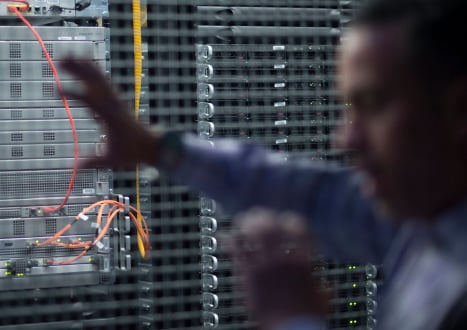







Top Cisco Certification Exams
- 200-301
- 350-401
- 350-701
- 300-410
- 300-715
- 820-605
- 350-601
- 300-415
- 300-710
- 300-420
- 300-425
- 350-501
- 200-901
- 350-801
- 200-201
- 350-901
- 400-007
- 700-805
- 300-620
- 300-730
- 500-220
- 300-435
- 300-430
- 300-815
- 350-201
- 300-810
- 300-515
- 300-610
- 300-440
- 100-150
- 100-140
- 300-820
- 300-510
- 300-735
- 300-720
- 300-215
- 300-615
- 300-635
- 300-910
- 300-725
- 300-535
- 500-560
- 500-443
- 700-750
Site Search:













